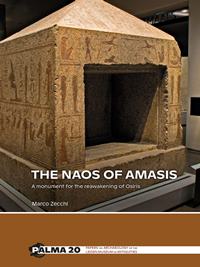| Main » Ad Board » ДРЕВЕН ЕГИПЕТ И АФРИКА » Археология |
| 19.04.2020, 11:43 | |
Царуването на Яхмос II (Амазис, 570– 526 г. пр. н.е.), втори фараон от XXVI династия на Саис (664-525 г. пр. н.е.) е период на политическо могъщество, икономически разцвет и интензивно строителство. Макар каменните монументи от онова време да не достигат величието и гигантските мащаби на оставените от далечните му предшественици, те въпреки това впечатляват в изящната си изработка и съвършенството на формите. - на английски език, от MEGA, формат PDF.Сваляне с ляв бутон (downloading by left button) и после през бутона Download.
АЛТЕРНАТИВЕН ЛИНК / ALTERNATIVE LINK: - на английски език, от Google Docs,формат PDF. Сваляне с ляв бутон (downloading by left button) от страницата на предоставящия сървър, после през бутона стрелка надолу/after by down arrow button.
| |
| Views: 867 | Placed till: 19.08.2022 | Rating: 0.0/0 | |

